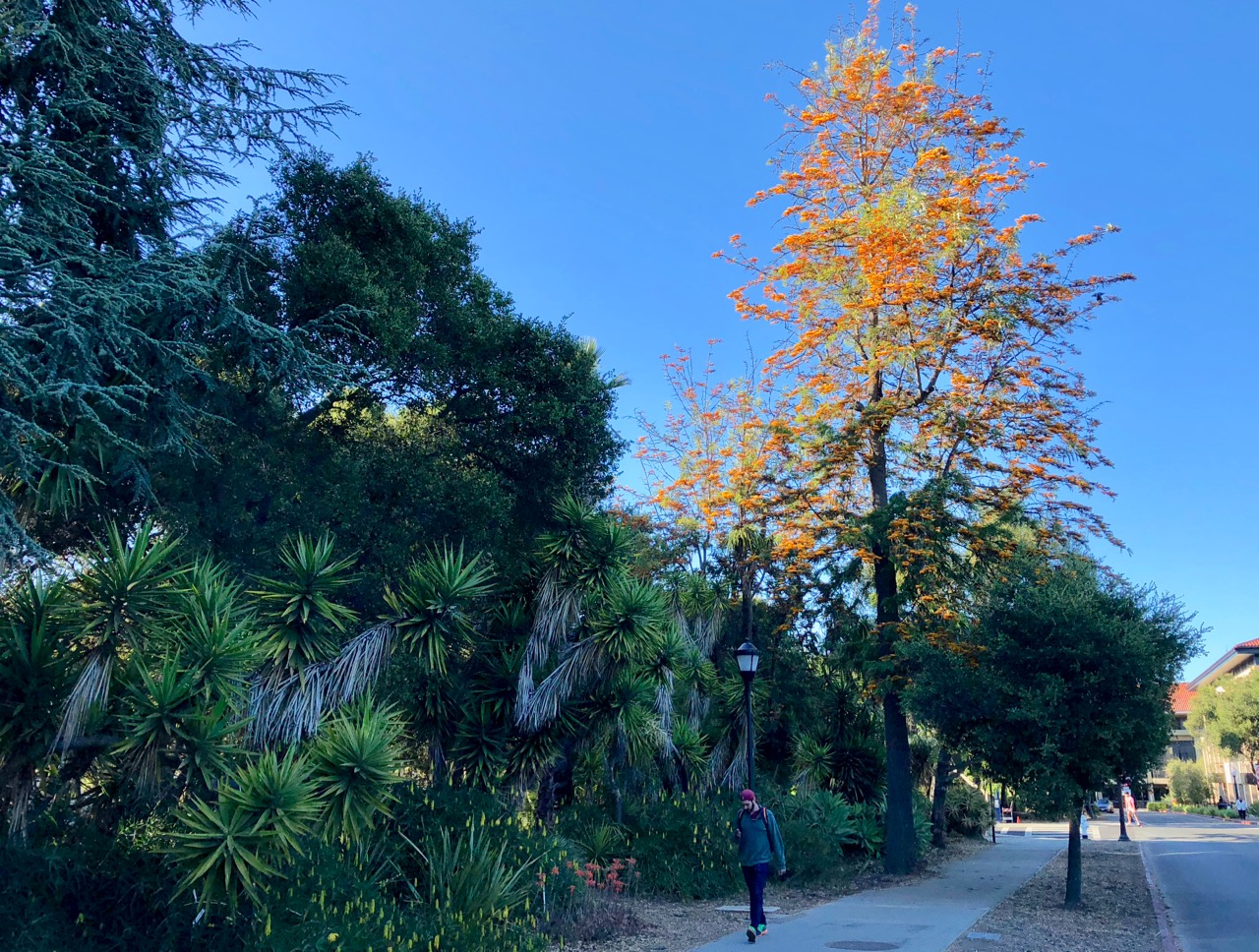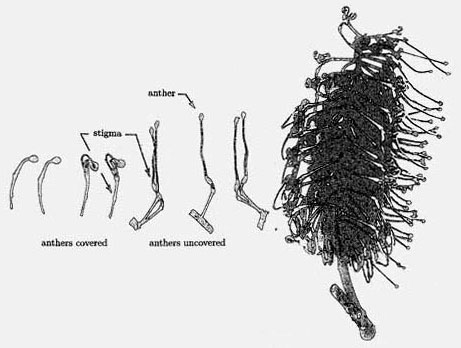Grevillea robusta
 silky oak
silky oak

Silky oaks were freely planted on campus at one time for their fast growth, ability to survive neglect, and spectacular golden flowers. Two survivors are at the edge of the Papua New Guinea Garden along Lomita Drive, one is in the grove north of the Lou Henry Hoover Building, one is in front of Escondido School, and others are in the arboretum. When in flower around the first of May they are easy to locate but they are also identifiable by the unusual leaves and the feathery texture of the foliage. About 100 unusual flowers, arranged in a 4-inch long raceme, have no petals; the stamens are latched like safety pins to isolate the anthers until the stigmas are fertilized. The black hooked pods contain winged seeds.
The leaves fall in the spring making a spectacular mess that would be less noticeable if they fell in the fall. In some years seedlings can be found and transplanted. They do very well in offices, growing rapidly and looking rather like ferns. The trees are widely planted around the world as ornamentals and in Kenya are planted between tea bushes for shade. The wood, often referred to as silk oak, has conspicuous shiny medullary rays. At one time, nearly every lift in Sydney was paneled with veneer peeled from silky oak logs.
Grevillea ‘Noel’, with recognizably similar (red) flowers and pods, is a vigorous bush. It has been planted as a ground cover on the bank south of the southeast corner of the Main Quad, in Lomita Mall, and north of the Art Gallery and Lou Henry Hoover Building. Also see it at Campus Drive near Arrillaga and at 340 Bonair Siding. Varietal names are customarily capitalized and not italicized, and since 1959 the use of Latinized species names (referred to as specific epithets, ending in -ii or -iana, for example) in the official wording of the cultivar name, has been a no-no (nursery labels reading ‘Noellii’ notwithstanding).
About this Entry: The main text of this entry is from the book Trees of Stanford and Environs, by Ronald Bracewell, published 2005. John Rawlings added Campus Drive and Bonair locations of ‘Noel’. Escondido School location added, 1115 Hamilton location removed; all locations now accurate (Jun 2020, SP).





